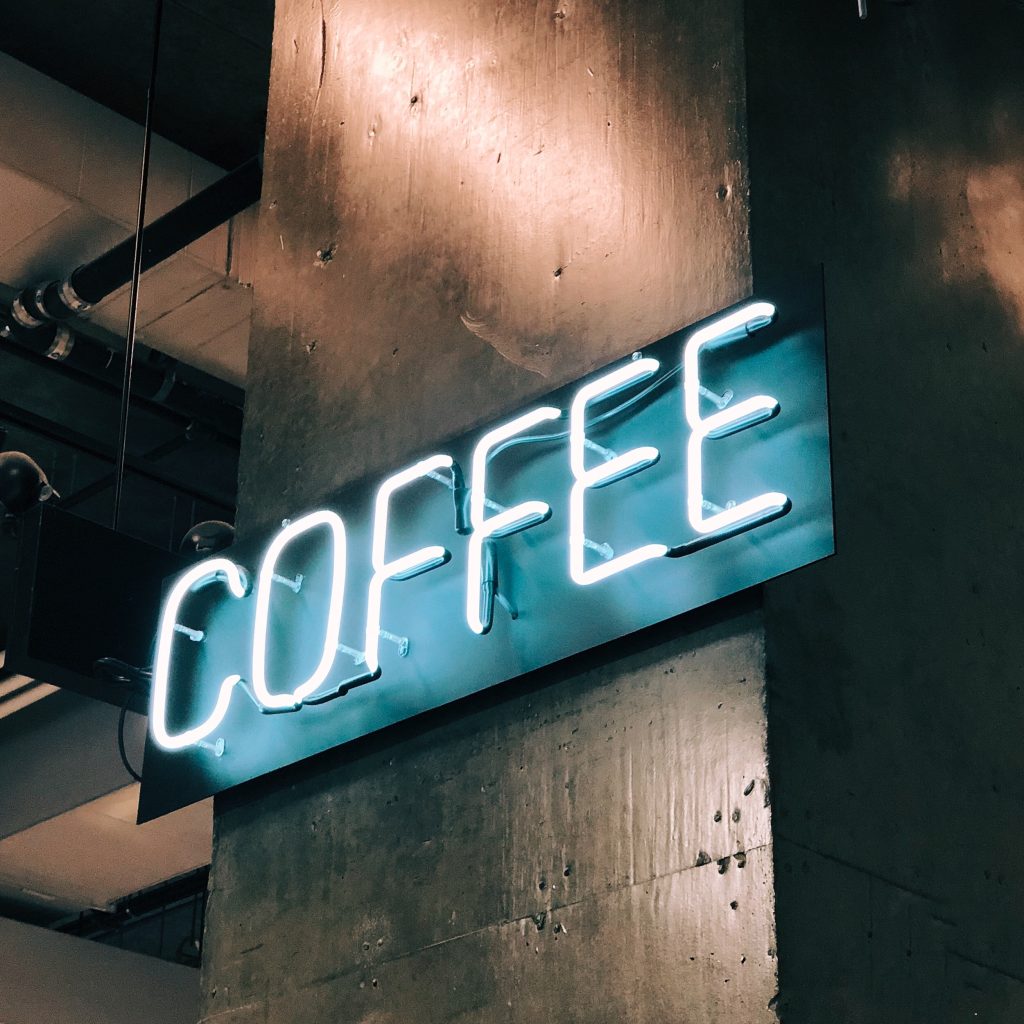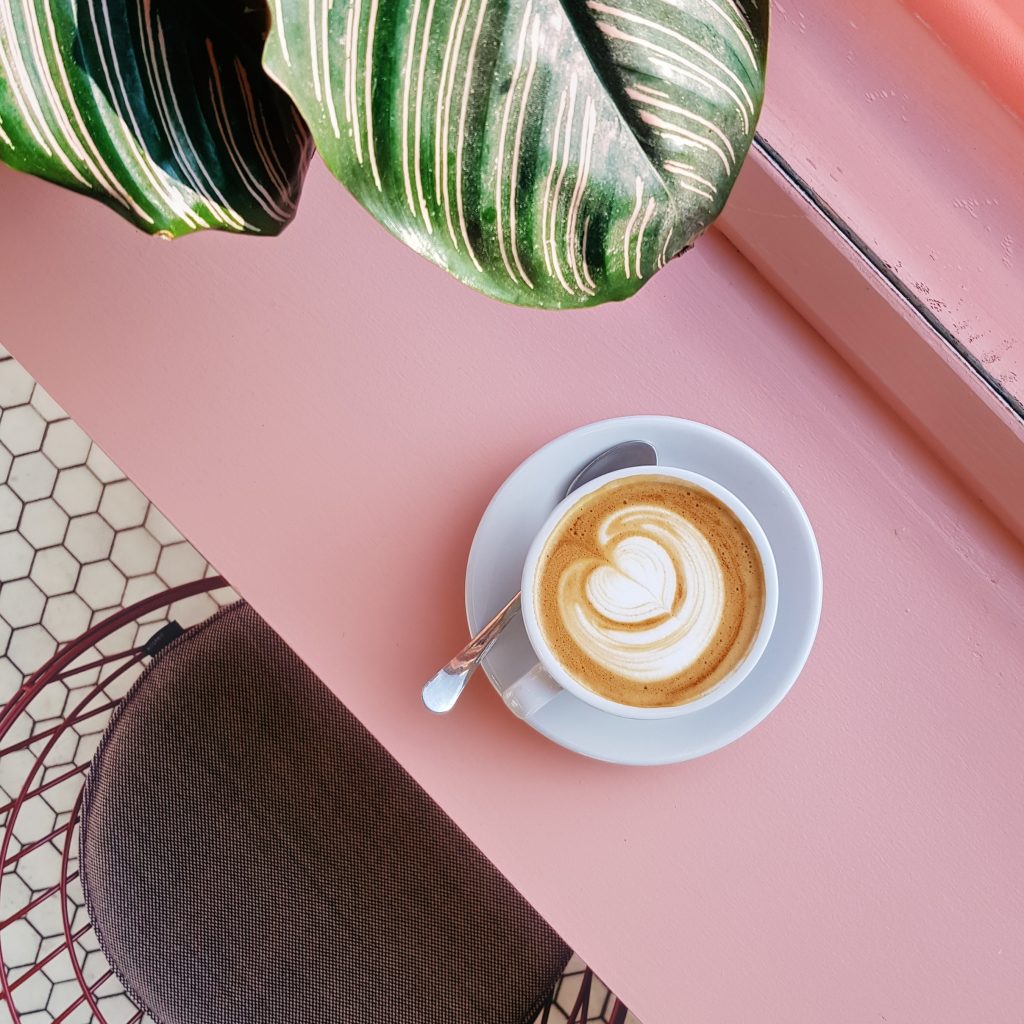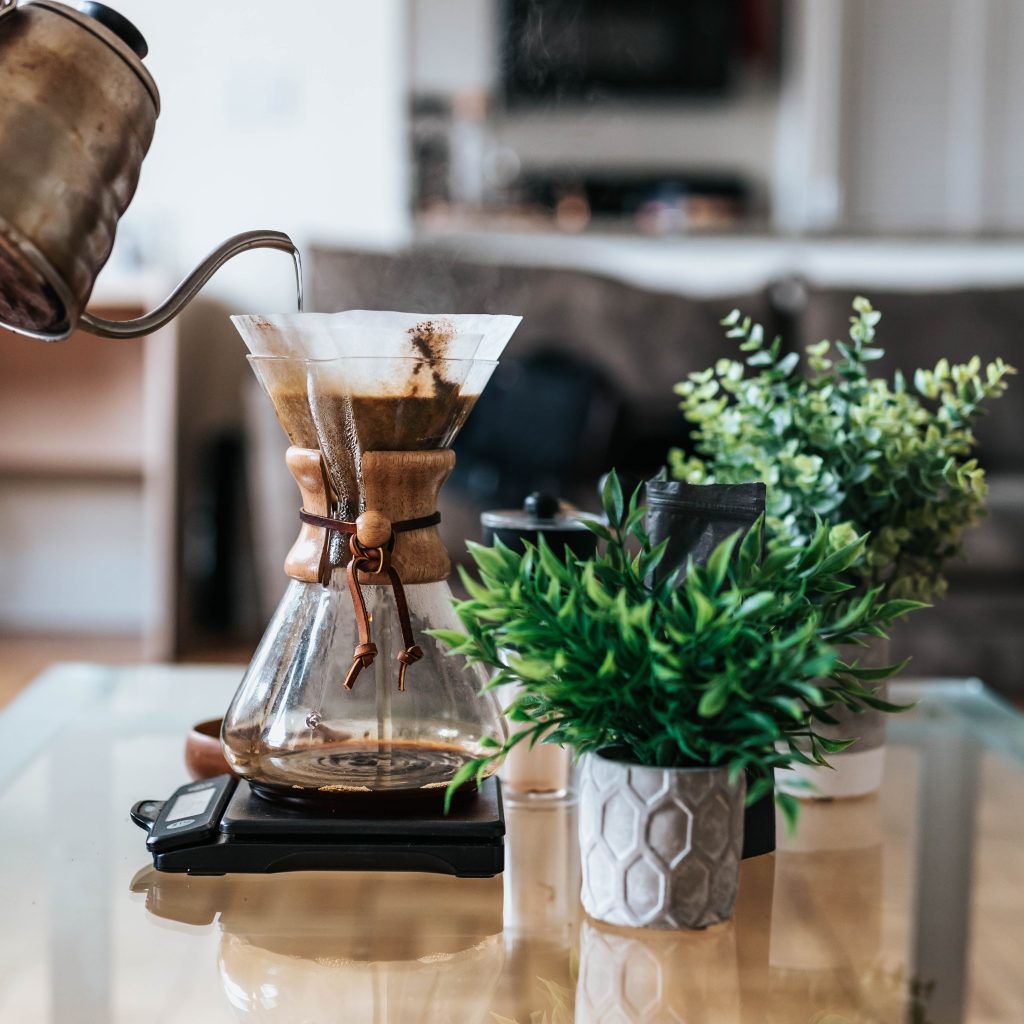How to Brew Coffee with a Percolator
So, you’ve got yourself a percolator and you’re wondering how to brew a delicious cup of coffee with it. Well, look no further! In this article, we’ll walk you through the steps of making coffee with a percolator, from selecting the right coffee grounds to achieving that perfect strength and flavor. Whether you’re a coffee connoisseur or just a casual coffee lover, we’ve got you covered with our simple and friendly guide. So grab your percolator and let’s get brewing!

Choosing the Right Percolator
Stovetop vs Electric Percolators
When it comes to choosing the right percolator, one of the first decisions you’ll face is whether to go with a stovetop or an electric percolator. Stovetop percolators are known for their traditional and nostalgic charm. They require a heat source, such as a stove, to create the brewing process. On the other hand, electric percolators are more convenient and user-friendly. They have built-in heating elements that eliminate the need for a separate heat source. Both options have their advantages, so it ultimately comes down to personal preference and convenience.
Size and Capacity
Another important factor to consider when choosing a percolator is its size and capacity. Percolators come in various sizes, ranging from single-serve to large family-sized options. Think about how much coffee you typically drink or how many people you’ll be serving. If you’re a coffee enthusiast or often entertain guests, a larger capacity percolator would be a better choice. On the other hand, if you only need to make a couple of cups at a time, a smaller-sized percolator will be sufficient.
Material and Quality
The material and quality of the percolator are crucial for ensuring a great brewing experience. Stainless steel is a popular choice due to its durability and heat retention properties. It also prevents any potential metallic taste in the coffee. Look for percolators made from high-quality materials that are built to last. Investing in a well-made percolator will ensure that you can enjoy delicious coffee for a long time without worrying about wear and tear.
Selecting Coffee Beans and Grind
Type of Coffee Beans
The type of coffee beans you choose will greatly impact the flavor of your percolator coffee. There are several types of coffee beans available, including Arabica, Robusta, and blends. Arabica beans are known for their smooth and nuanced flavors, making them an excellent choice for percolator brewing. Robusta beans, on the other hand, have a stronger and more intense flavor. It’s important to consider your personal taste preferences and experiment with different beans to find your perfect match.
Roast Level
The roast level of the coffee beans also contributes to the flavor profile of your percolator coffee. Light roast beans are known for their mild and subtle flavors, while medium roast beans have a balanced taste. If you prefer a stronger and bolder flavor, dark roast beans are the way to go. It’s all about finding the roast level that suits your palate and preferences. Don’t be afraid to try different roast levels to discover the flavor that you enjoy the most.
Grind Size for Percolators
The grind size of your coffee beans plays a crucial role in the brewing process with a percolator. For percolators, a coarser grind is recommended compared to other brewing methods, such as espresso. The coarse grind allows the water to flow through the grounds and extract the flavors properly. Too fine of a grind can result in a bitter and over-extracted brew. Invest in a good quality burr grinder to ensure consistent and precise grind size for your percolator coffee.

Measuring Coffee and Water
Coffee-to-Water Ratio
Getting the right coffee-to-water ratio is key to brewing a perfect cup of coffee with a percolator. The general rule of thumb is to use one tablespoon of coffee for every six ounces of water. However, feel free to adjust the ratio to suit your taste preferences. If you prefer a stronger cup, you can increase the amount of coffee, and if you prefer a milder cup, you can decrease it. The key is to find the balance that delivers a cup of coffee that you truly enjoy.
Determining the Number of Cups
Before brewing your coffee, it’s essential to determine the number of cups you want to make. Knowing the quantity of coffee you need will help you measure the right amount of coffee beans and water. Most percolators come with measurement markings on the inside, which makes it easier to fill them with the right amount of water. Remember to take into account the volume that the coffee grounds will displace when deciding on the number of cups to brew.
Adjusting for Personal Preference
One of the beauties of brewing coffee with a percolator is the ability to adjust the brewing process to suit your personal preference. If you prefer a stronger cup of coffee, you can increase the amount of coffee beans or steeping time. On the other hand, if a milder cup is your preference, you can decrease the coffee beans or reduce the brewing time. Don’t be afraid to experiment and make adjustments until you achieve the perfect cup of percolator coffee for you.
Preparing the Percolator
Cleaning the Percolator
Before each use, it’s important to ensure that your percolator is clean and free from any residue that may affect the taste of your coffee. Start by disassembling the percolator and cleaning each part separately. Wash the percolator in warm soapy water and rinse thoroughly. Pay extra attention to the filter or basket, as any leftover coffee grounds can result in a bitter brew. Once the percolator is clean, reassemble it, ensuring that all the parts are properly in place and ready for brewing.
Inserting the Filter/Basket
Most percolators come with a filter or basket that holds the coffee grounds during the brewing process. Make sure you properly insert the filter or basket into the percolator before adding the coffee grounds. This will ensure that the water flows through the grounds evenly, resulting in a well-extracted and flavorsome coffee. Take a moment to double-check that the filter or basket is secure and won’t shift during the brewing process.
Filling with Water and Coffee
Now that your percolator is clean and the filter or basket is in place, it’s time to add water and coffee. Start by filling the percolator with the desired amount of water, making sure not to exceed the maximum capacity. Then, add the appropriate amount of coffee grounds based on your preferred coffee-to-water ratio. Gently stir the coffee grounds to ensure they are evenly distributed throughout the percolator. With everything in place, your percolator is now ready to brew a delightful pot of coffee.

Brewing Process
Stovetop Percolator Instructions
If you’ve opted for a stovetop percolator, the brewing process is quite simple. Place the percolator on the stovetop over medium heat and allow the water to heat up. As the water boils, it will rise through the stem and drip over the coffee grounds, allowing the flavors to infuse into the hot water. Keep an eye on the percolator and listen for the characteristic percolating sound. Once the coffee reaches your desired strength, remove the percolator from the heat and let it sit for a moment to let the grounds settle before serving.
Electric Percolator Instructions
For electric percolators, the brewing process is even easier. Start by plugging in the percolator and pouring water into the designated reservoir. Then, add the coffee grounds to the filter or basket. Close the lid and turn on the percolator. The electric percolator will handle the heating process and automatically cycle the water through the coffee grounds. Once the brewing cycle is complete, the percolator will switch to a keep-warm mode, allowing you to enjoy hot coffee whenever you’re ready.
Monitoring the Brew
It’s important to monitor the brewing process to ensure that you achieve your desired strength and flavor. With a stovetop percolator, this can be done visually by observing the color of the coffee as it percolates. If you prefer a stronger cup, you can let it percolate for a longer time. Electric percolators usually have a clear window or an indicator light that allows you to monitor the brewing process. Keep an eye on the percolator and make note of the brewing time that best suits your taste preferences.
Timing and Temperature
Ideal Brew Time
The ideal brew time for a percolator can vary depending on personal preferences and the type of beans used. On average, the brewing process can take anywhere from six to ten minutes. However, it’s crucial to experiment and find the brew time that produces the best results for you. If you prefer a milder cup, you might opt for a shorter brew time, while a longer brew time can result in a stronger and more robust cup of coffee. Taste and adjust until you find the perfect balance.
Temperature Control
Temperature control plays a vital role in achieving a great cup of percolator coffee. The water temperature should be hot enough to extract the flavors from the coffee grounds but not too hot to cause over-extraction or scorching. Most percolators will automatically reach the ideal temperature for brewing, whether on a stovetop or an electric percolator. However, it’s essential to ensure that your percolator is in good working condition and heating the water to the appropriate temperature for optimal results.
Removing and Serving
Taking out the Percolator Stem
Once your coffee has finished brewing, it’s time to remove the percolator stem. Carefully lift the stem out of the percolator, making sure to hold it by the designated handle or grip to avoid any burns. Removing the stem will prevent further extraction and ensure your coffee doesn’t become over-extracted or bitter. Set the stem aside and proceed to the next step of serving your freshly brewed percolator coffee.
Pouring the Coffee
To pour your percolator coffee, hold the percolator by the handle, ensuring a secure grip. Slowly and steadily pour the coffee into your desired cup or mug. Take care not to rush the pour, as this can cause spills or splashes. The steady and deliberate pour will help ensure that you get all the flavors from the coffee while keeping any sediment or coffee grounds at the bottom of the percolator. Enjoy the aromatic scent as you pour and savor the anticipation of tasting your freshly brewed coffee.
Adding Optional Ingredients
Percolator coffee is delicious on its own, but if you enjoy adding extras to enhance the flavor, now is the time to do so. Some popular additions include milk, cream, sugar, honey, or flavored syrups. Experiment with different combinations and find your perfect blend. Remember to stir gently after adding any ingredients to ensure they are well incorporated. Enjoy the process of customizing your coffee to your liking and making each cup a delightful experience.
Cleaning and Maintenance
Cleaning After Each Use
Proper cleaning and maintenance of your percolator are essential to preserve its longevity and ensure the best-tasting coffee. After each use, disassemble the percolator and wash each part separately with warm soapy water. Pay extra attention to the filter or basket, as any lingering coffee grounds can impact the flavor of future brews. Rinse thoroughly and allow all parts to air dry before reassembling the percolator. Regular cleaning after each use will prevent any build-up and maintain the quality of your percolator.
Descaling for Hard Water
If you live in an area with hard water, it’s important to periodically descale your percolator. Hard water can leave mineral deposits that affect the performance and taste of your percolator coffee. To descale, fill the percolator with equal parts of water and white vinegar. Run a brewing cycle without coffee grounds, allowing the vinegar mixture to dissolve any mineral build-up. Rinse thoroughly with clean water to remove any vinegar residue before using the percolator again.
Storing the Percolator
When not in use, it’s essential to store your percolator properly to keep it in good condition. Allow the percolator to cool completely before storing to prevent any damage or potential accidents. Find a cool and dry place to store your percolator, ensuring that it’s protected from dust and other potential contaminants. Avoid stacking other items on top of the percolator, as this can cause scratches or dents. With proper storage, your percolator will always be ready to brew a delicious cup of coffee.
Troubleshooting Common Issues
Weak or Watery Coffee
If your percolator coffee turns out weak or watery, it may be due to a few factors. You can try increasing the amount of coffee grounds or adjusting the brewing time for a stronger brew. Additionally, make sure that your percolator is heating the water to the appropriate temperature, as lower temperatures can result in a weak extraction. Experiment with these variables until you achieve the desired strength and flavor for your coffee.
Bitter or Over-Extracted Coffee
If your percolator coffee tastes bitter or over-extracted, it may be due to over-steeping or using too fine of a grind. Try decreasing the brewing time or switching to a coarser grind size for your coffee beans. It’s also important to pay attention to the water temperature during brewing, as excessive heat can lead to bitterness. By adjusting these variables, you can prevent over-extraction and enjoy a more balanced and enjoyable cup of percolator coffee.
Coffee Grounds in the Brew
Finding coffee grounds in your percolator coffee can be frustrating. To minimize this issue, ensure that you’re using a properly sized filter or basket that can effectively trap the coffee grounds. Also, double-check that the filter or basket is securely in place before brewing. If you still encounter coffee grounds in your brew, consider switching to a coarser grind size or using a mesh filter that offers finer filtration. These adjustments can help reduce the presence of coffee grounds in your percolator coffee.
Enjoying Your Percolator Coffee
Pairing with Breakfast Foods
Percolator coffee pairs exceptionally well with a variety of breakfast foods. Whether you’re enjoying a hearty plate of pancakes and bacon or a light and fluffy croissant, the rich and full-bodied flavors of percolator coffee complement a range of breakfast flavors. Experiment with different coffee and food pairings to find combinations that bring out the best in each other. Start your day off right with a delicious breakfast and a cup of percolator coffee that sets the tone for a wonderful morning.
Experimenting with Flavors
Percolator coffee serves as an excellent base for experimenting with different flavors. Consider adding a hint of cinnamon, a dash of vanilla extract, or a sprinkle of cocoa powder to your percolator coffee. These simple additions can elevate the flavor profile and create a unique and personalized cup of coffee. Don’t be afraid to get creative and explore the vast range of flavors that can enhance your percolator coffee experience.
Sharing with Others
Percolator coffee has a way of bringing people together. Invite friends and family over for a casual coffee gathering and delight them with the robust flavors of percolator coffee. Share your brewing knowledge and insights, and let them experience the joy of a perfectly brewed cup. The process of brewing and enjoying percolator coffee together creates a warm and inviting atmosphere, allowing for meaningful conversations and connections. Share the love of percolator coffee with others and create lasting memories.
In conclusion, brewing coffee with a percolator is a delightful and rewarding experience. By carefully choosing the right percolator, selecting quality coffee beans and grind, measuring coffee and water accurately, preparing the percolator properly, and following the brewing process and timing guidelines, you can consistently enjoy a great cup of percolator coffee. With the right troubleshooting techniques and a willingness to experiment with flavors, you can enhance your percolator coffee experience and savor each sip. So go ahead, embrace the world of percolator coffee, and enjoy the unique flavors it brings to your morning routine and beyond.

